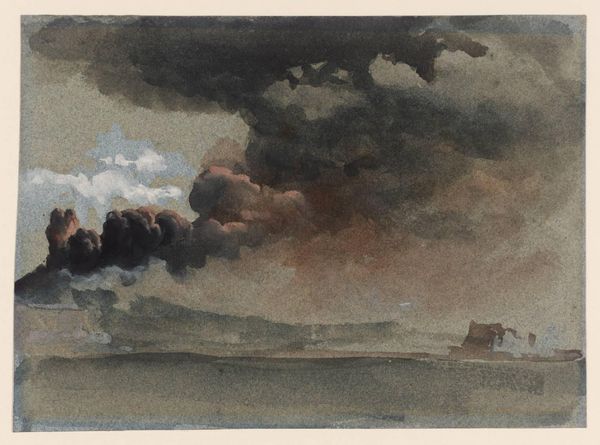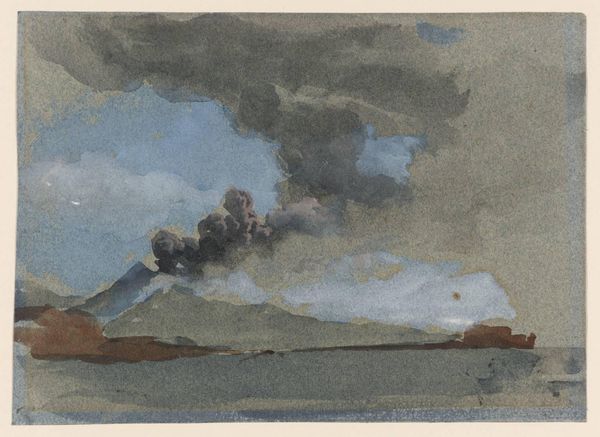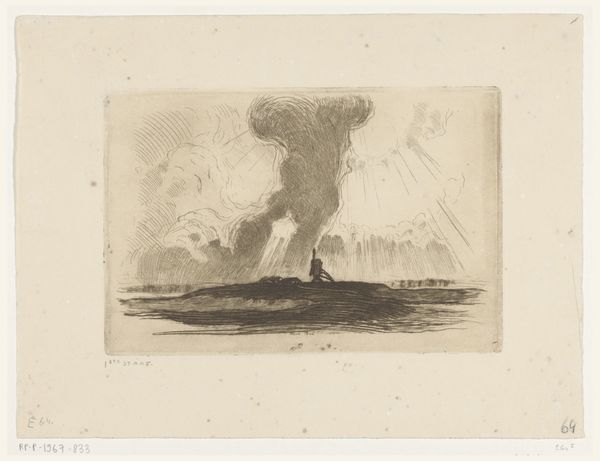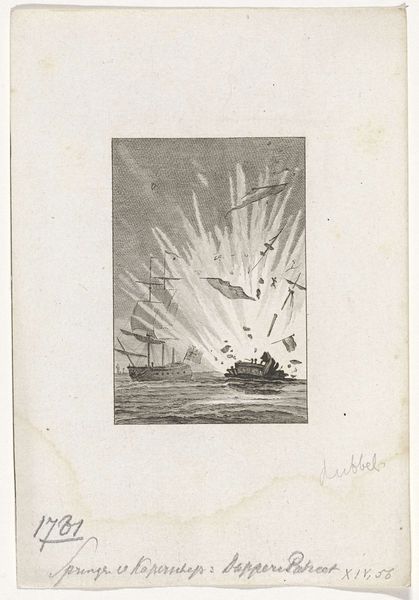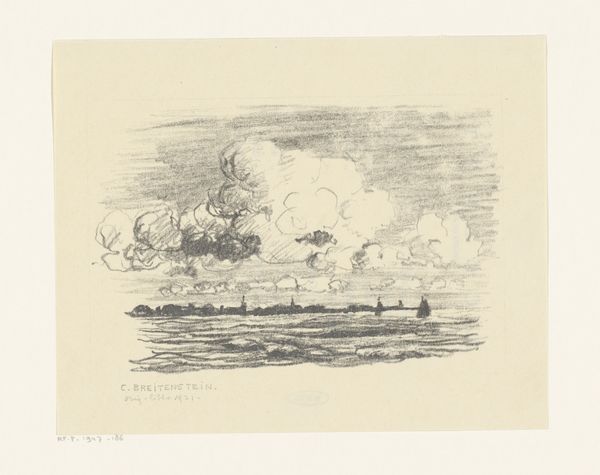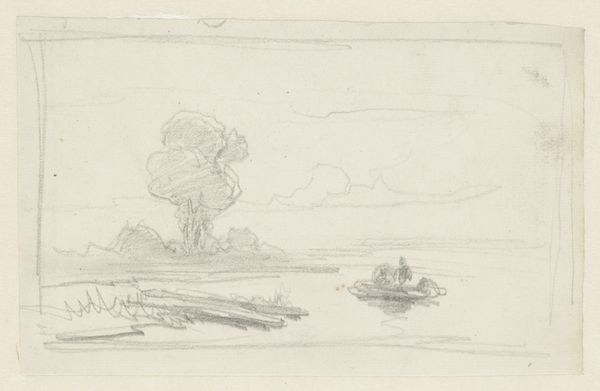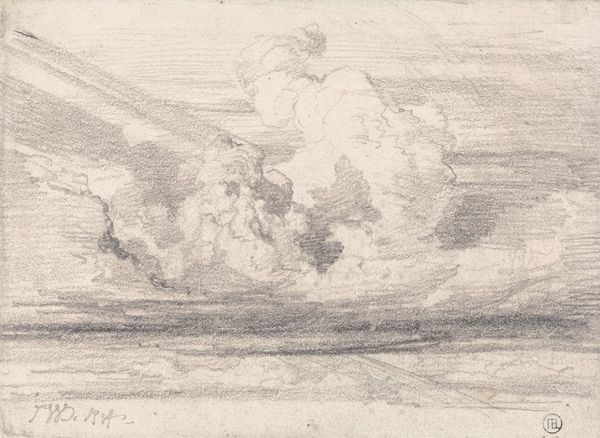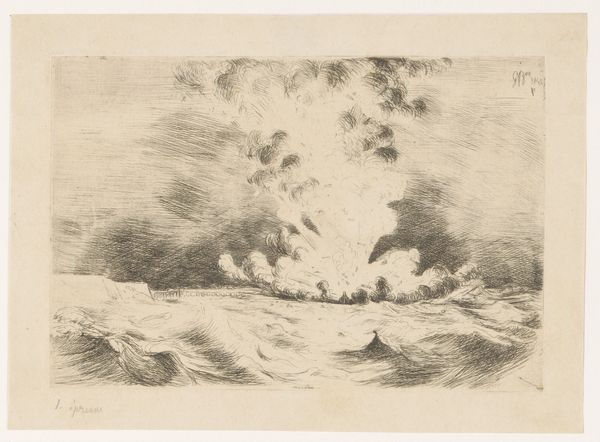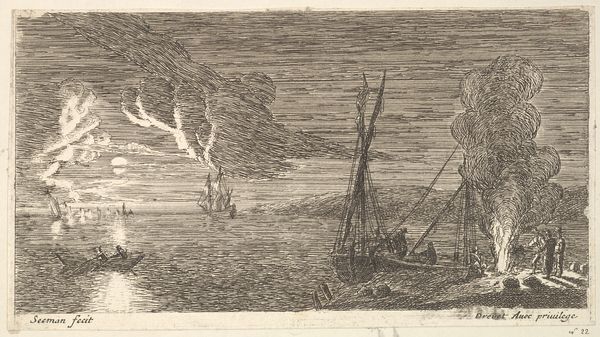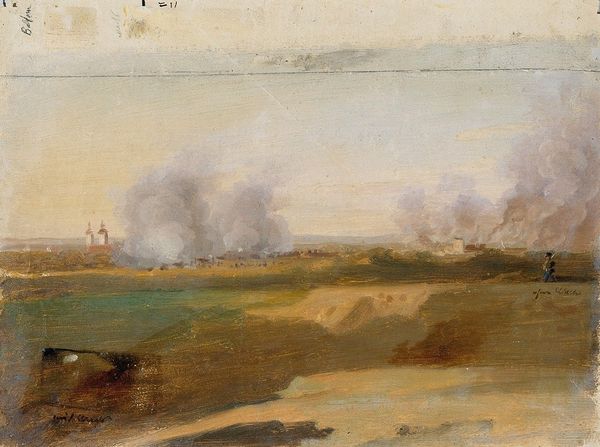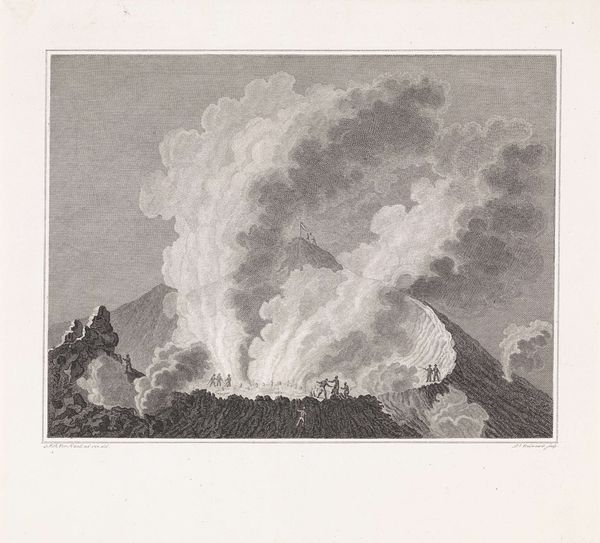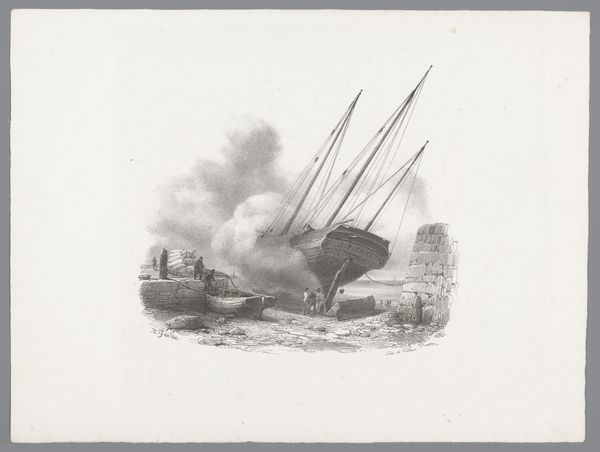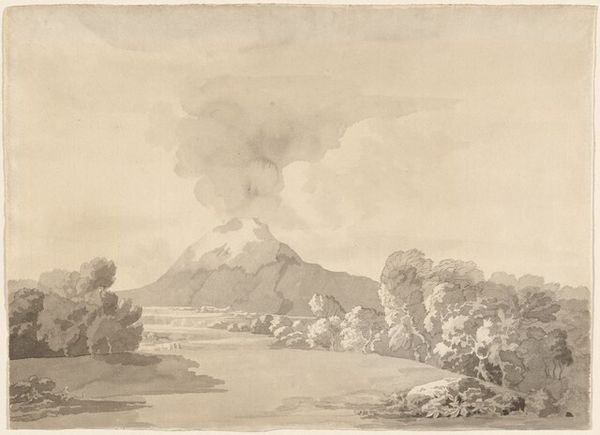
Distant View of Vesuvius, by Sunset. Verso: Sketch of Mountain Tops, or Cliffs and Rocks 1839
0:00
0:00
Dimensions: support: 128 x 177 mm
Copyright: CC-BY-NC-ND 4.0 DEED, Photo: Tate
Editor: Here we have Clarkson Stanfield's watercolor, "Distant View of Vesuvius, by Sunset." It's quite small, only about 13 by 18 centimeters, and the colors are so muted. What do you see in this piece in terms of its production? Curator: The rapid strokes and the use of watercolor suggest a certain urgency, doesn't it? Consider the socio-economic conditions: the demand for easily reproducible images, the rise of tourism fueling a market for quick sketches like this. It's a commodity, an easily consumed memento of Vesuvius. Editor: So, less about the sublime and more about accessible art? Curator: Precisely. The materials themselves—paper and pigment—became readily available. How does that accessibility change our perception of the subject matter, the mighty volcano itself? Editor: I guess it domesticates it, makes it less terrifying, more of a keepsake. I hadn't thought about it that way.
Comments
tate 9 months ago
⋮
http://www.tate.org.uk/art/artworks/stanfield-distant-view-of-vesuvius-by-sunset-verso-sketch-of-mountain-tops-or-cliffs-and-t08223
Join the conversation
Join millions of artists and users on Artera today and experience the ultimate creative platform.
tate 9 months ago
⋮
Stanfield was seen as Turner’s only rival in marine subjects. By this date (1839) his more highly-finished oil paintings were more popular than Turner’s more atmospheric works, which baffled many people. This watercolour observation of a plume of smoke rising from Mount Vesuvius being caught by the setting sun shows Stanfield at his most informal and spontaneous. It may help explain why Ruskin emphasised his particular excellence in the treatment of clouds. Gallery label, September 2004
